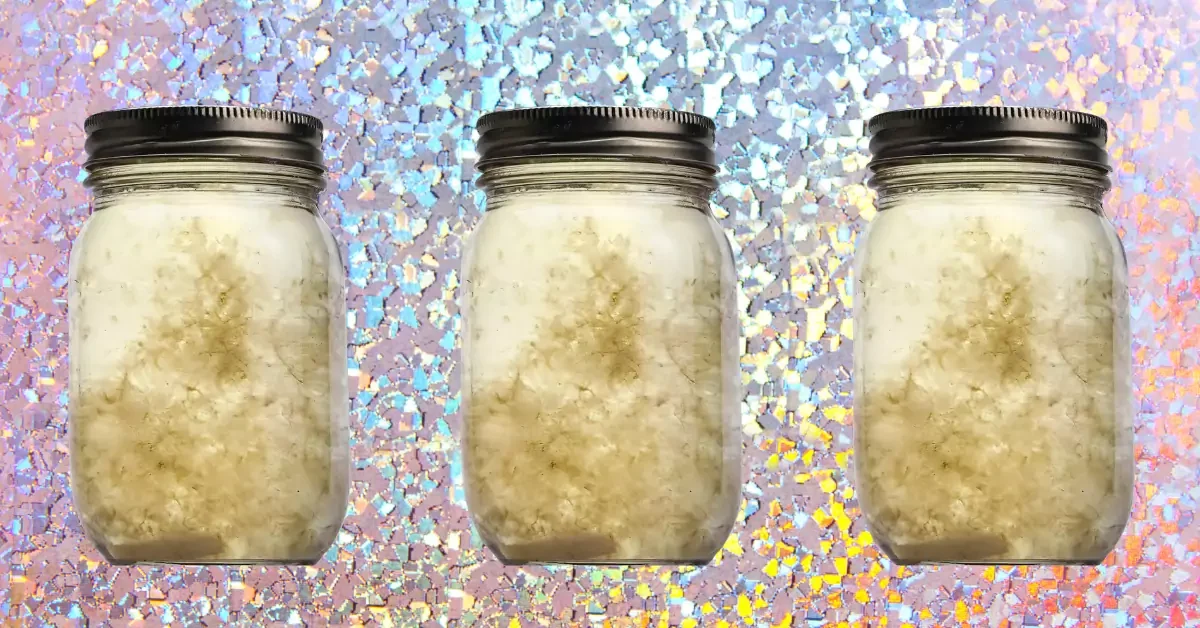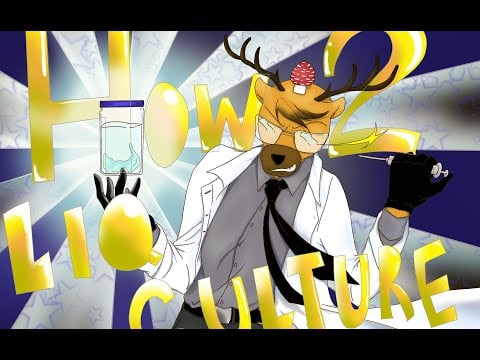
This article presents a comprehensive guide to mushroom liquid culture, a critical aspect of mycology. It explores the systematic process of propagating mycelium in a nutrient medium, detailing the stages of strain selection, medium preparation, sterilization, and inoculation. The piece underscores the necessity of sterile conditions, precise processes, and suitable storage while comparing spores versus liquid culture.
In understanding the basics of mushroom liquid cultures, one must grasp how this method dramatically accelerates growth by providing a nutritious environment for mycelium. Making liquid culture involves inoculating a sterilized nutrient-rich liquid with mushroom spores or a piece of mushroom tissue. The mycelium, the vegetative part of the fungus, then grows in this liquid, absorbing the nutrients and expanding rapidly.
One of the significant advantages of liquid culture is its potential for fast and extensive mycelium growth. This method provides an ideal environment for the mycelium, leading to more vigorous and rapid growth than traditional methods. Moreover, once the mycelium has colonized the liquid culture, it can be used to inoculate various substrates, thus expanding liquid cultures with ease and efficiency.
However, like any other cultivation method, there may be challenges, necessitating troubleshooting liquid cultures. Contamination is a common issue, often caused by improper sterilization or handling. Signs of contamination may include unexpected color, smell, or texture changes. Therefore, maintaining a sterile environment and using proper techniques are crucial to successful liquid culture growth.
For hobbyists and small-scale growers, DIY liquid culture is an affordable and accessible option. One can create a productive liquid culture home with essential ingredients such as water, sugar, yeast, and equipment like a pressure cooker and canning jar. This saves costs and offers the satisfaction of hands-on involvement in the cultivation process.

While there are multiple methods for cultivating mushrooms, this discussion will provide a detailed, step-by-step guide on preparing mushroom liquid cultures. This is a favored technique due to its efficiency and scalability. The first step involves selecting a suitable nutritional medium. This could be a simple water and organic malt extract solution or alternative mediums based on the specific mushroom species’ preferences.
The sterilization methods are critical in this process. After preparing the solution, it must be sterilized to create a contaminant-free environment for the mycelium. This is typically done through pressure cooking or autoclaving. Once the medium is sterilized and cooled, it’s ready to introduce the mushroom mycelium, carried out in a clean environment to prevent foreign contaminants.
For enhancing growth, frequent agitation of the liquid culture is necessary. This can be accomplished with a magnetic stirrer or manually, which helps distribute nutrients and promote mycelium growth. Troubleshooting tips include checking for signs of contamination, such as off-colors, foul odors, or slow growth.
Once the mycelium fully colonizes the liquid medium, it can be used for inoculating your substrate. However, storing the liquid culture correctly, ideally in a cool, dark place, prolongs its viability.
Both mushroom liquid cultures and spore syringes are pivotal tools in mycology, but they differ significantly in their application, scalability, and efficiency in mushroom cultivation. The comparison between the two is essential to understand their respective benefits and drawbacks.
Mushroom liquid cultures, solutions proliferating with mycelium, offer the advantage of rapid colonization. This fast growth results from mycelium in a growing liquid culture and can expand upon inoculation. Furthermore, liquid cultures are highly scalable, facilitating the cultivation of large quantities of mushrooms. The main drawback, however, rests in the risk of contamination, which can be challenging to identify.
On the other hand, spore syringes contain mushroom spores suspended in water. These syringes are typically easier to store and transport, providing a significant benefit. They also offer a wide variety of strains for cultivation. However, the main drawback of spore syringes is the time needed for the mushroom spores to germinate and form mycelium, making them less efficient than liquid cultures.
For an in-depth comparison of these two products, please read our article mushroom spores vs mushroom liquid culture.
Navigating through the various obstacles in mushroom liquid cultures requires a meticulous approach and a deep understanding of mycological principles. The common challenges associated with mushroom liquid cultures range from contamination issues to maintaining culture health and maximizing shelf life.
Contamination prevention is the most critical aspect of mushroom cultivation. Without proper equipment sterilization, harmful bacteria and molds can infiltrate the culture, hindering growth and potentially posing health risks. This necessitates using pressure cookers or autoclaves to sterilize all equipment thoroughly and work within a clean, dust-free environment.
Maintaining the health of the mushroom culture is another vital consideration. The mycelium must be kept in optimal health through appropriate nutrient provision, regular agitation for oxygenation, and maintaining suitable temperature and pH levels.
Maximizing shelf life is essential for prolonged use of the liquid culture. Proper storage conditions, such as a cool, dark place free from contaminants, can significantly extend the culture’s viability.
Addressing these challenges can ensure healthy and productive mushroom liquid cultures. Key steps include:
Procuring high-quality mushroom liquid cultures is integral to successful mushroom cultivation, necessitating a keen understanding of reliable sources and factors affecting culture viability. This process primarily involves choosing reputable sellers and assessing the benefits of homemade cultures.
Reputable sellers ensure the provision of healthy, viable cultures tested for contamination. They offer a wide variety of species, with well-documented descriptions of each strain’s growth characteristics and potential yields. This information is crucial for novice and experienced cultivators to make informed purchasing decisions.
Where to Buy Professionally Made Mushroom Liquid Cultures?
Thick Spores manufactures high-quality mushroom liquid culture syringes. We specialized in psilocybin mushroom liquid cultures such as psilocybe cubensis mushroom liquid cultures, and panaeolus cyanescens mushroom liquid cultures.

Understanding the science behind liquid cultures in mushroom growth is essential for effective cultivation. It enriches our broader comprehension of fungal biology and the intricate role of mycelium in mushroom development. This concept is pivotal in exploring the benefits of liquid culture in mushroom cultivation.
Nutrients, such as sugars and minerals, are vital for the growth and development of mycelium. They provide energy and essential building blocks for cell construction.
Sterilization is crucial in eliminating potential contaminants, ensuring a clean environment for the mushroom mycelium to grow.
Regular agitation ensures that nutrients are evenly distributed, facilitating uniform and vigorous growth of the mycelium.
Liquid cultures offer an efficient way to maintain and propagate specific mushroom strains, ensuring their longevity and availability for future cultivation.
In essence, liquid culture is a symbiosis of carefully controlled conditions and biological processes, each contributing to the overall success of mushroom cultivation. It presents a cost-effective and efficient method, offering scalability and increased colonization speed. Moreover, using liquid culture significantly reduces the risk of contamination, providing a clean environment for the mycelium to grow and thrive. Understanding these fundamental aspects offers aspiring mycologists and enthusiasts a solid foundation, opening doors to innovative cultivation techniques and preserving diverse mushroom strains.
Both beginners and experienced cultivators can significantly benefit from practical advice on using mushroom liquid cultures, and this discussion aims to provide several valuable tips to optimize your cultivation process. Using mushroom liquid cultures for commercial cultivation is becoming increasingly popular due to its scalability and cost-effectiveness. However, maintaining these cultures’ health is crucial to ensure a successful yield.
One of the primary tips for maintaining the health of mushroom liquid cultures is regular agitation and oxygenation, which encourages the mycelium’s growth. Sterility is another key factor, as contamination can severely impact the culture’s health and productivity. Therefore, using sterile equipment and maintaining a clean environment is essential.
When maximizing yield with mushroom liquid cultures, choosing a nutrient medium plays a significant role. Different strains of mushrooms may prefer other nutrients. Hence, experimenting with various nutrient mediums can help optimize the yield.
Troubleshooting common issues in mushroom liquid cultures often involves identifying and addressing contamination. Contamination can present itself as a discolored liquid or an off smell. In such cases, discarding the contaminated culture and starting fresh is recommended.
Lastly, staying updated with the latest innovations in mushroom liquid culture techniques can enhance your cultivation process. These may include advanced sterilization methods, automated agitation systems, or new nutrient mediums. Cultivators can significantly improve their cultivation efficiency and yield by following these tips and keeping abreast of recent advancements.
In recent years, many have explored the advantages of utilizing liquid cultures for homegrown mushroom cultivation. This method offers many benefits, making it a preferred choice for novice gardeners and seasoned mycologists.
The benefits and advantages of liquid cultures are extensive and include:
Maximizing the potential of liquid cultures requires a comprehensive understanding of the process and a keen attention to detail. Tips for successful mushroom cultivation include:
Different liquid culture techniques can be experimented with to find the most effective method for specific mushroom species. However, common issues in liquid cultures, such as contamination or slow growth, can be efficiently troubleshooted by adjusting the environmental conditions or sterilization practices.
An adequately prepared mushroom liquid culture can have a shelf life of several months. Culture preparation, storage conditions, contamination prevention, nutrient composition, and quality indicators significantly affect its longevity.
Oyster, shiitake, and lion’s mane mushrooms are ideal for liquid culture propagation due to their robustness. Proper sterilization techniques, contamination prevention, perfect incubation conditions, nutrient provision, and culture aeration are crucial for successful cultivation.
Mushroom liquid cultures can be frozen for long-term storage. However, freezing effects like ice crystal formation may impact culture viability. Proper storage containers, thawing process, and freezer conditions are critical to preserve cultures effectively.
If your mushroom liquid culture isn’t growing as expected, consider checking for contamination issues, reassessing sterilization techniques, addressing potential nutrient deficiencies, ensuring optimal temperature conditions, and meeting specific light requirements.
Combining different mushroom strains in one liquid culture involves understanding strain compatibility, hyphal fusion, and crossbreeding techniques. It can lead to hybrid vigor and increased genetic diversity but also poses challenges in maintaining strain purity.